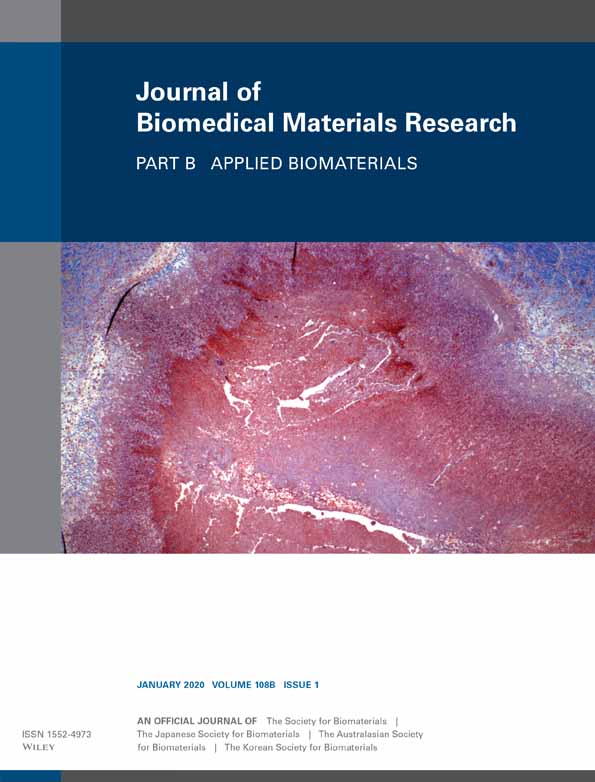Electrospun nanofiber mesh with fibroblast growth factor and stem cells for pelvic floor repair
Abstract
Surgical outcome following pelvic organ prolapse (POP) repair needs improvement. We suggest a new approach based on a tissue-engineering strategy. In vivo, the regenerative potential of an electrospun biodegradable polycaprolactone (PCL) mesh was studied. Six different biodegradable PCL meshes were evaluated in a full-thickness abdominal wall defect model in 84 rats. The rats were assigned into three groups: (1) hollow fiber PCL meshes delivering two dosages of basic fibroblast growth factor (bFGF), (2) solid fiber PCL meshes with and without bFGF, and (3) solid fiber PCL meshes delivering connective tissue growth factor (CTGF) and rat mesenchymal stem cells (rMSC). After 8 and 24 weeks, we performed a histological evaluation, quantitative analysis of protein content, and the gene expression of collagen-I and collagen-III, and an assessment of the biomechanical properties of the explanted meshes. Multiple complications were observed except from the solid PCL-CTGF mesh delivering rMSC. Hollow PCL meshes were completely degraded after 24 weeks resulting in herniation of the mesh area, whereas the solid fiber meshes were intact and provided biomechanical reinforcement to the weakened abdominal wall. The solid PCL-CTGF mesh delivering rMSC demonstrated improved biomechanical properties after 8 and 24 weeks compared to muscle fascia. These meshes enhanced biomechanical and biochemical properties, demonstrating a great potential of combining tissue engineering with stem cells as a new therapeutic strategy for POP repair. © 2019 Wiley Periodicals, Inc. J Biomed Mater Res Part B: Appl Biomater 108B:48–55, 2020.




